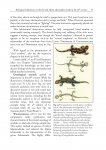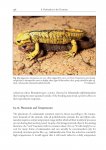Azhael
Site Contributor
- Joined
- May 7, 2007
- Messages
- 6,644
- Reaction score
- 121
- Points
- 0
- Location
- Burgos
- Country
- Spain
- Display Name
- Rodrigo
Ok, i really like Salamandra and i really like this book, so when a very nice, friendly, german giant asked me to say a few words about his very nice book, i could hardly say no. Allow me to fetch a foulard and a pair of hipster glasses and go full pretentious reviewer on you:
It's no mean feat managing to produce a book that is packed with excellent information while simultaneously bombarding you with a miriad of gorgeous photographs, and this book does it in style. Providing a veritable education on all things Salamandra, this book explores every topic, from the origins of the genus in the dawn of Natural History, to the latest discoveries in the complicated phylogenetic relationships whithin it, from their biology, ecology, distribution and the challenges of their conservation to everything you could possibly need to know to succeed in their captive care and reproduction. It is a celebration of the genus Salamandra and its special place not only in the hearts and minds of those who admire their striking beauty, but also as a biologically fascinating, remarkably diverse and unique genus, for when Charles Darwin wrote the phrase “endless forms most beautiful”, in the back of his mind, he must have been thinking of the genus Salamandra (or at least, he bloody well should have).
Maybe you are someone who has just discovered the existence of these fascinating creatures and would like to learn more about them, a dedicated hobbyist looking for a definitive guide on their captive care and reproduction, or maybe you are just in love with these captivating amphibians and can't get enough of them. Either way, you are not going to find a better, more up to date, accessible and complete resource than this, this book is not just a detailed treatise of the entire genus and a treasure trove of captive-rearing knowledge but also a luxurious collection of high-quality pictures that pays respect to the extreme variability and intense, dazzling beauty of all of the various forms.
Fire salamanders and their close relatives have conquered the european and mediterranean land and its inhabitant's minds like no other amphibian, so it is proper that they should be given tribute and the author's of this book have let their admiration for these wonderful creatures shine through every page.
And now, because you have survived that (i warned you it was going to be pretentious, but this genus demands nothing less, it can't be helped), here are some sample pages.
The book is available in english or german, from: The Genus Salamandra
It's no mean feat managing to produce a book that is packed with excellent information while simultaneously bombarding you with a miriad of gorgeous photographs, and this book does it in style. Providing a veritable education on all things Salamandra, this book explores every topic, from the origins of the genus in the dawn of Natural History, to the latest discoveries in the complicated phylogenetic relationships whithin it, from their biology, ecology, distribution and the challenges of their conservation to everything you could possibly need to know to succeed in their captive care and reproduction. It is a celebration of the genus Salamandra and its special place not only in the hearts and minds of those who admire their striking beauty, but also as a biologically fascinating, remarkably diverse and unique genus, for when Charles Darwin wrote the phrase “endless forms most beautiful”, in the back of his mind, he must have been thinking of the genus Salamandra (or at least, he bloody well should have).
Maybe you are someone who has just discovered the existence of these fascinating creatures and would like to learn more about them, a dedicated hobbyist looking for a definitive guide on their captive care and reproduction, or maybe you are just in love with these captivating amphibians and can't get enough of them. Either way, you are not going to find a better, more up to date, accessible and complete resource than this, this book is not just a detailed treatise of the entire genus and a treasure trove of captive-rearing knowledge but also a luxurious collection of high-quality pictures that pays respect to the extreme variability and intense, dazzling beauty of all of the various forms.
Fire salamanders and their close relatives have conquered the european and mediterranean land and its inhabitant's minds like no other amphibian, so it is proper that they should be given tribute and the author's of this book have let their admiration for these wonderful creatures shine through every page.
And now, because you have survived that (i warned you it was going to be pretentious, but this genus demands nothing less, it can't be helped), here are some sample pages.
The book is available in english or german, from: The Genus Salamandra






